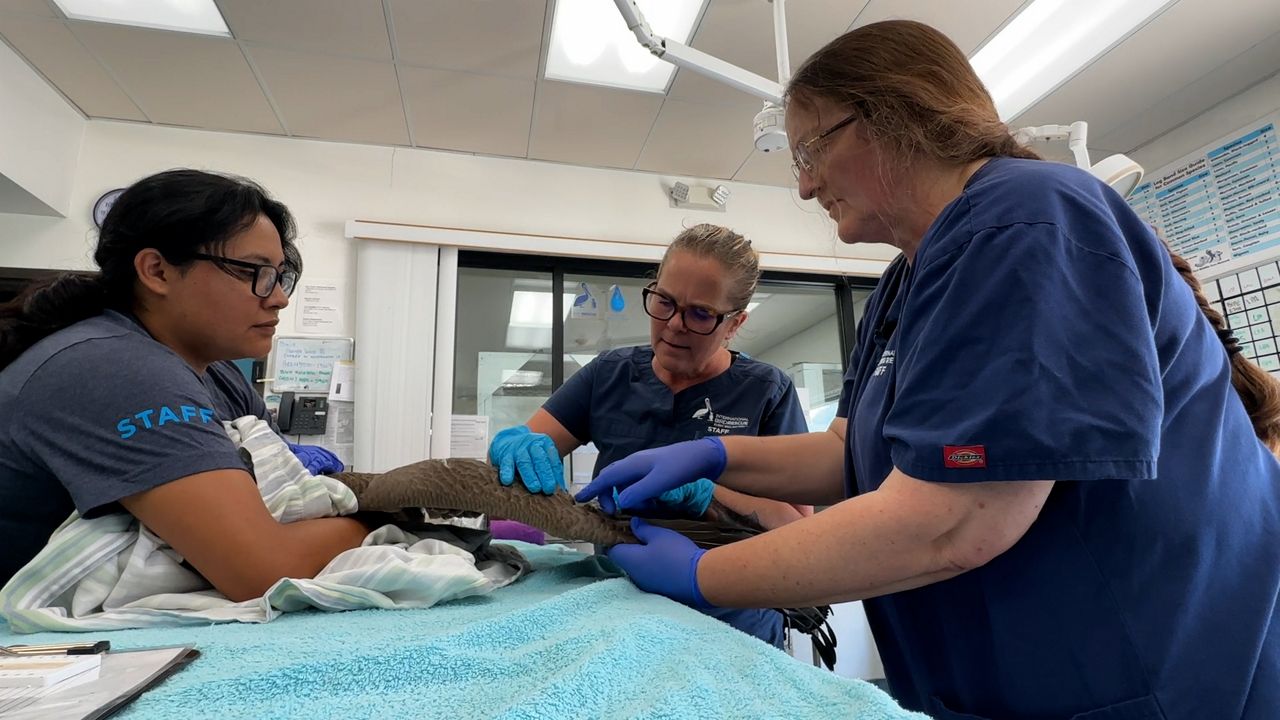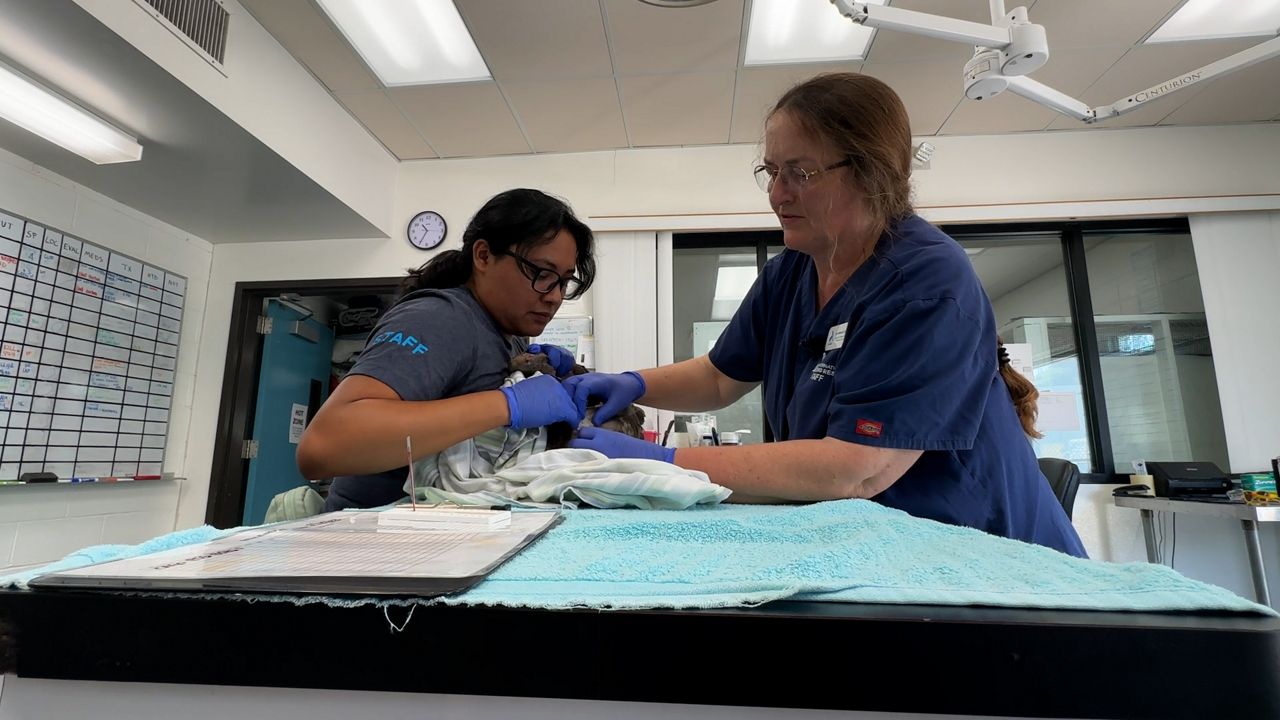SAN PEDRO, Calif. — The sound of webbed feet splashing in the water marks a major step in the road to recovery for a Canadian goose known as Violet 855.
As she settles in and begins snacking on food, it's clear to see she's come a long way from the condition she was in when she arrived at the International Bird Rescue LA Wildlife Center on July 31.
Rebecca Duerr is the director of research and veterinary science at the San Pedro facility.
She says it was difficult to tell the animals were geese the day they were brought in.
“They were essentially stuck to themselves when they came in and in serious danger of suffocating,” she said. “They were completely embedded in this gooey, black material. Imagine being embedded in, you know, bubble gum.”
The geese, 855, was one of 15 Canadian geese that landed in the thick oily natural asphalt at La Brea Tar Pits. Half died on site. Most of the seven rescued alive were too severely burned or injured to survive the ordeal. Now only two remain.
“She’s already starting to grow some new feathers,” Duerr pointed out to Wildlife Rehabilitation Technician Jennifer Martines as they examined the other survivor, White 857. Her injuries were more severe — burns down to the bone that required surgery.
“She still feels pretty weak,” said Duerr. “She’s not fighting very much. That’s a residue of her muscle problem.”
This is hardly the first time the staff here has treated animals stuck in the Tar Pits.
“Actually, many years ago, [I] washed a turtle that had gotten into the tar pits,” Julie Skoglund said.

As director of operations for International Bird Rescue, she says they treat birds injured in the Tar Pits maybe once a year or even less. She says what likely happened is that the flock of migratory geese mistook the Tar Pits for a lake that is increasingly few and far between in LA.
“It’s really a loss of habitat,” she explained. “Without natural lakes and areas for these animals to be able to go, places like the Tar Pits can be an attractant.”
“We don’t have a whole lot of wetland habitat here in the LA basin,” Duerr echoed. “We have endless city for miles and miles and miles…so it’s not surprising sometimes when a whole flock of animals might land in potentially hazardous spot like that tarpit lake.”
In a statement, Josh Chesler, the communications manager for the Natural History Museum of Los Angeles County and La Brea Tar Pits and Museum, called this “an unfortunate and distressing situation.”
“La Brea Tar Pits is one of the most remarkable fossil sites in the world,” he wrote. “This particular situation is a rare occurrence, but animals occasionally getting stuck in the tar is a process that has been happening here for over 60,000 years.”
The Tar Pits aren’t new. But relatively speaking, urban development is and Skoglund says it’s left birds with fewer safe open spaces, not to mention a host of other problems.
Last year, a goose crash landed at Dodger Stadium mid-game, likely disoriented by light pollution around the stadium.

Skoglund says the only way to avoid incidents like this is through communication and collaboration between developers and conservationists.
"So much of the wetlands and a lot of the inland lakes here in California are critical," she explained. "And it's critical to keep them and keep them in good condition."
Back in the examining room, Duerr continues to assess the recovery of the two survivors. One has a long road ahead. The other could be released in two weeks.
She has been in this field for 35 years and finds her work extremely rewarding.
"A lot of the animals that we treat have been injured pretty much directly by the consequences of human activity," she said. "We are able to correct their problems and release them as healthy wild animals back into the environment."
The key is ensuring they have a safe and healthy environment to return to.
If you'd like to donate to the organization or learn about volunteer opportunities, visit birdrescue.org.



